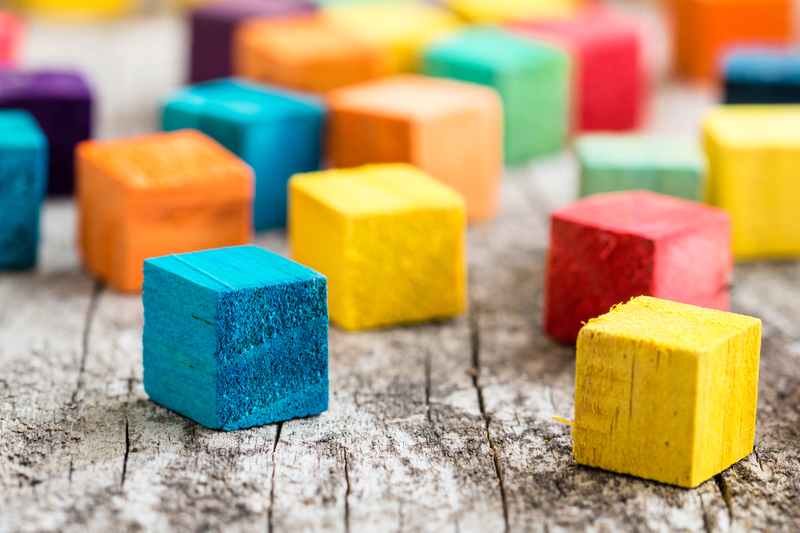Easy Methods to Lower Household Waste: A Comprehensive Guide
Over the past decades, the challenge of household waste reduction has surged to the forefront of environmental conversations. An average household generates significant amounts of garbage daily, much of which ends up in landfills, polluting the earth and atmosphere. The good news is that by adopting some easy methods to lower household waste, families can make a meaningful environmental impact, often saving money and simplifying their lives in the process. This guide explores practical, accessible strategies you can start using today to cut down on waste at home.

Understanding Household Waste: What Are We Throwing Away?
Before diving into specific methods, it's essential to understand what constitutes household waste. Common items include food scraps, packaging, paper products, plastics, glass, textiles, and electronic waste. While some waste is inevitable, a considerable portion can be avoided or diverted from landfills using the methods outlined below.
The Environmental Impact of Excessive Household Waste
- Greenhouse Gas Emissions: Decomposing waste in landfills releases methane, a potent greenhouse gas.
- Resource Depletion: Producing disposable items consumes water, energy, and raw materials.
- Land and Water Pollution: Improperly managed waste leads to contamination of land and water supplies.
- Impact on Wildlife: Animals often ingest or become entangled in household waste.
By implementing simple waste reduction strategies, you're playing an active role in protecting the planet for future generations.
1. Embrace the Reduce, Reuse, and Recycle Philosophy
The classic 3Rs--Reduce, Reuse, Recycle--remain crucial for decreasing household waste. Here's how you can apply them effectively:
Reduce: Cut Down on What You Bring Home
- Choose Products with Minimal Packaging: Opt for items with recyclable, compostable, or zero packaging.
- Buy in Bulk: Buying larger quantities with less overall packaging reduces waste per use.
- Shop Locally: Local products typically require less packaging and fewer transportation resources.
- Avoid Single-Use Items: Say no to disposable utensils, plates, napkins, and straws.
Reuse: Give Items a Second Life
- Reusable Bags: Take cloth or durable shopping bags for groceries and errands.
- Glass Containers and Jars: Store leftovers or bulk goods in repurposed jars.
- Repurpose Old Textiles: Transform worn-out clothes into rags or tote bags.
- Repair Instead of Replace: Mend clothes, shoes, and appliances instead of throwing them away.
Recycle: Process What You Can't Avoid
- Follow Local Recycling Rules: Understand what your municipality accepts to boost recycling rates.
- Clean Recyclables: Rinse out jars, cans, and bottles to avoid contamination.
- Recycle Batteries and Electronics Properly: Use designated drop-off points.
2. Compost Food and Yard Waste
One of the easiest ways to reduce household food waste is by composting. Food scraps and yard clippings make up a large proportion of landfill waste, yet they can easily become nutrient-rich compost with minimal effort.
Composting At Home: How-To Guide
- Start Small: Use a countertop compost bin for daily food scraps.
- Create a Backyard Compost Pile: Mix greens (vegetable scraps, coffee grounds) with browns (leaves, cardboard).
- Try Vermicomposting: Use worms to quickly process food scraps in an apartment or small space.
- Use Finished Compost: Add to garden beds or houseplants for natural fertilizer.
*Tip:* Many towns offer municipal composting services--take advantage if available.
3. Shop Smart and Meal Plan
Food waste is a major contributor to overall trash. Planning your meals and shopping with intention can significantly reduce the amount of uneaten food tossed each week.
Meal Planning Tricks to Lower Food Waste
- Make a Weekly Meal Plan: Write down your meals and snack ideas to avoid overbuying.
- Use a Shopping List: Stick to the list to prevent impulse purchases.
- Check Your Pantry First: Use up what you already have before buying more.
- Store Food Properly: Learn correct storage techniques to maximize shelf life.
- Use Leftovers Creatively: Transform extra food into soups, casseroles, or stir-fries.
Shop With Sustainability in Mind
- Buy Local and In Season: Reduces packaging and the carbon footprint of shipping.
- Support Zero-Waste Stores: Bring your own containers to purchase bulk goods.
- Opt for Recyclable or Compostable Packaging: Choose items that can easily be recycled or composted at home.
4. Switch to Reusable Household Products
Disposable paper towels, napkins, cleaning wipes, and plastic wraps all add to the household trash pileup. Fortunately, plenty of reusable alternatives are available.
Simple Swaps to Make Your Home Greener
- Cloth Napkins and Towels: Wash and reuse instead of tossing paper products.
- Silicone Food Storage Bags: Replace single-use plastics with long-lasting silicone versions.
- Beeswax Wraps: Use for wrapping food instead of plastic wrap.
- Metal or Glass Water Bottles: Ditch bottled water for reusable bottles.
- Rechargeable Batteries: Reduce electronic waste by recharging.
Over time, these small changes add up to a big reduction in household waste.
5. Recycle and Upcycle Household Items
Before discarding something, ask whether it can be recycled or upcycled. Upcycling transforms an old item into a new one, reducing both waste and the need to buy new goods.
Creative Upcycling Ideas
- Glass Jars: Turn into storage containers or vases.
- Old T-Shirts: Make into cleaning cloths or reusable bags.
- Cardboard Boxes: Use for organizing drawers or kids' crafts.
- Wine Corks: Create cork boards or keychains.
- Pallet Wood: Build garden furniture or planter boxes.
Recycling and upcycling not only lower household waste but can also inspire creativity and save money.
6. Be Mindful of Electronic and Hazardous Waste
Many electronics, batteries, and chemicals can't go in your regular trash and are harmful if they end up in a landfill. Proper disposal of e-waste and hazardous items is an easy but often overlooked way to cut down on household waste.
Safe Methods for Disposing Hazardous Waste
- Use Designated Collection Sites: Many towns hold periodic collection days for paint, chemicals, and electronic waste.
- Pollution Prevention: Never pour oils, chemicals, or medication down the drain.
- Recharge and Reuse: Invest in rechargeable batteries to reduce single-use waste.
7. Get the Family Involved
Reducing household waste works best when everyone pitches in. Instill waste reduction habits in kids from an early age and make the process fun.
Waste Reduction Activities for Families
- Sorting Game: Teach young children to separate recycling, compost, and trash.
- Challenge Weeks: See how little garbage your family can create in a week.
- Family Composting: Assign composting tasks to different family members.
- Craft Projects: Use old packaging and containers for creative projects.
8. Give Away or Donate Unwanted Items
Rather than throwing away usable products, consider giving them a new home. Donating household goods extends the lifecycle of items and helps those in need.
- Clothing and Shoes: Donate to shelters or thrift stores.
- Furniture: Offer to local charities or through online platforms.
- Toys and Books: Give to schools, libraries, or neighborhood swaps.
- Appliances and Electronics: Some retailers and non-profits accept working or repairable devices.
Many local groups offer free pickup services for donations, making this an easy, convenient way to lower household waste.
9. Educate and Advocate
Share your knowledge of household waste reduction methods with others in your community. Sometimes, all it takes to spark change is leading by example or starting a conversation with neighbors, friends, or coworkers.
- Join or Start a Local Green Group: Organize clean-ups or teach waste-reduction workshops.
- Advocate for Better Services: Petition for improved recycling programs or compost pick-up.
- Community Swaps: Organize clothing or book swaps to extend the lifecycle of goods.

The Impact of Lowering Your Household Waste
Every small action contributes to a cleaner, healthier planet. The benefits of lowering household waste include:
- Saving Money: Buying less and reusing more cuts household expenses.
- Improved Health: Avoiding plastic and chemicals leads to a healthier home environment.
- Less Clutter: Fewer acquisitions mean tidier, more serene living spaces.
- Setting a Positive Example: Inspire friends, family, and children by making sustainable choices visible.
Conclusion: Start Lowering Your Household Waste Today!
Lowering household waste doesn't require a radical lifestyle overhaul. By adopting a handful of easy habits to cut down on trash and making small substitutions, you can greatly minimize your environmental footprint. Start with the tips that seem easiest and build on your progress over time. Involve your family, stay informed about your local options for recycling and composting, and don't hesitate to share your successes to amplify the impact. Together, we can create cleaner homes and a greener planet--one household at a time.
Take the first step today: Make it a habit to think before you throw. With these simple strategies to reduce home waste, you'll be surprised at how easy, rewarding, and impactful the journey can be.